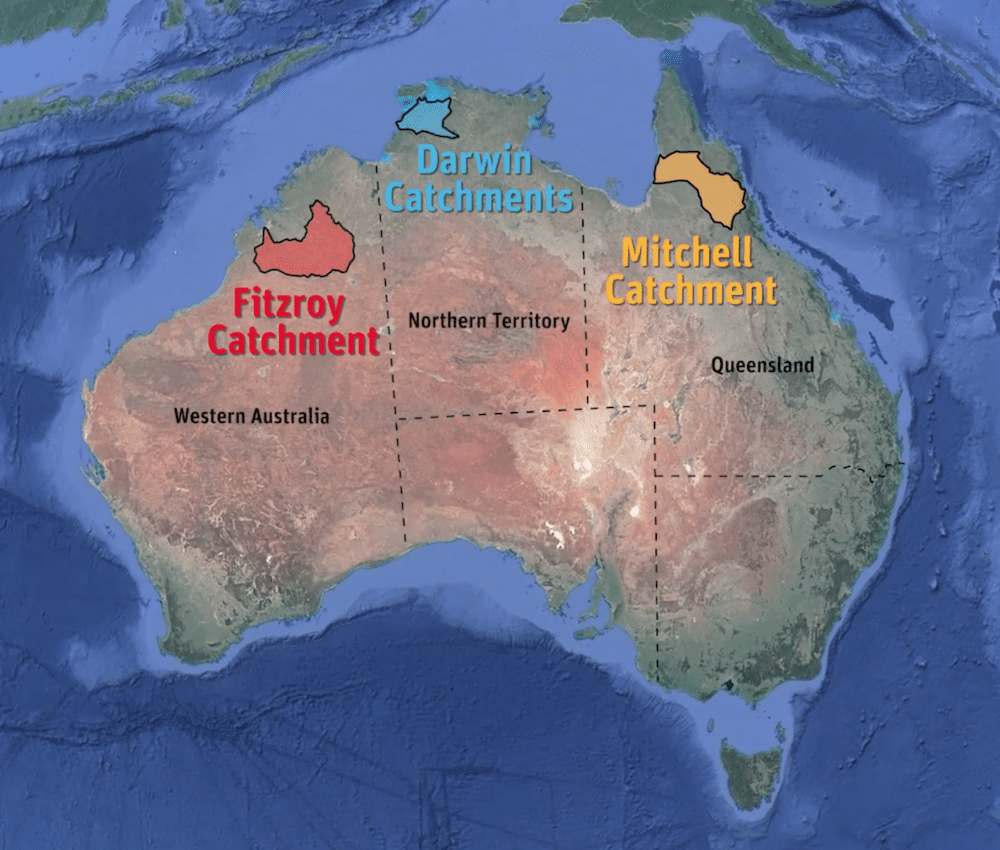
SIX new dam sites in northern Australia have been identified with the potential to collectively open up 370,000 hectares of land for new agricultural cropping developments, and twice that area for aquaculture ponds.
The six identified sites are the culmination of the largest and most extensive study of its kind.Prior to the CSIRO’s Northern Australia Water Resource Assessment study released today, much of northern Australia’s land and water resources had not been mapped in sufficient detail to provide for reliable resource allocation, mitigate investment or environmental risks, or build policy settings that can support decisions.
The study involved more than 100 CSIRO scientists working for 2.5 years using a CSIRO developed digital tool to assess every location in three priority catchments for its potential as a dam site.
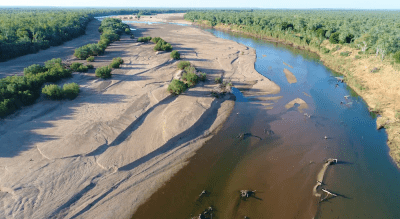 The catchments were the Fitzroy catchment in Western Australia, the Finniss, Adelaide, Mary and Wildman river catchments in the Northern Territory and the Mitchell catchment in Queensland.
The catchments were the Fitzroy catchment in Western Australia, the Finniss, Adelaide, Mary and Wildman river catchments in the Northern Territory and the Mitchell catchment in Queensland.
For each region, the CSIRO scientists evaluated the soil and water resources (both surface and groundwater), identified and evaluated water capture and storage options, identified and tested the commercial viability of irrigated agriculture and aquaculture opportunities, assessed the potential environmental, social and economic impacts and risks of water resources and irrigation developments.
If investment can be found to build the six dam sites, the projects would create almost 15,000 regional jobs and underpin a $4.85 billion boost to agricultural production in northern Queensland, the Northern Territory and Western Australia, Minister for Agriculture and Water Resources David Littleproud said.
Despite the optimistic tone of the report it also added a dose of reality, saying large developments for agriculture were “complex and costly”, and for all three catchments it recommended staged developments to limit risk of early failure and allow for small-scale testing on new farms.
It also noted that under the development scenarios examined, aggregated farm revenue from broadacre cropping was unlikely to cover the cost of infrastructure, so value-adding opportunities through processing “would greatly assist in improving commercial viability”.
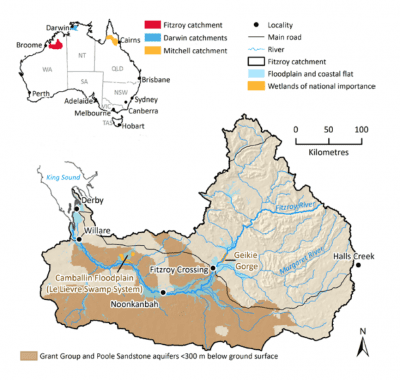
Click on images to enlarge
In the Fitzroy catchment, the scientists found water harvesting (water pumped into ringtanks) could potentially support 160,000 ha growing one dry-season crop a year in 85 per cent of years
Independent of surface water, groundwater could potentially support up to 30,000 ha of hay production in all years.
The report noted that establishing irrigated cropping in the region is challenging, with high input costs and high capital requirements for new (greenfield) developments.
“Gross margins between different crop options are highly variable with industrial crops (sugarcane and cotton) and forage hay giving the highest returns. For industrial crops to be profitable, local processing is required, and the scale of development and supply commitment needs to be sufficient to justify the investment in processing facilities,’ the report said
“Horticultural crops such as bananas, melons and mangoes are more profitable but the locational advantage of supplying to markets earlier than other regions is critical to viability.
“Farming systems that have more than one crop a year or are integrated and supplement the dominant beef production systems in the Fitzroy catchment are most likely to succeed initially.”
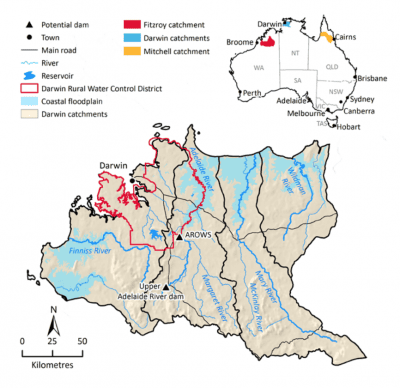 In the Darwin catchments, the reported indicated a combination of major dams, farm-scale off stream storage and groundwater could potentially support up to 90,000 ha of dry-season horticulture and mango trees
In the Darwin catchments, the reported indicated a combination of major dams, farm-scale off stream storage and groundwater could potentially support up to 90,000 ha of dry-season horticulture and mango trees
The Finniss, Adelaide, Mary and Wildman (i.e. Darwin) catchments have the potential to support about 90,000 ha of irrigated dry-season horticulture and mango trees from a range of water sources. Two large instream dams could release 436 GL for agriculture in 85pc of years.
It is physically possible to capture an additional 400 GL through offstream water harvesting and 35 GL could be sourced from groundwater resources outside of the Darwin Rural Water Control District. The actual area that could be irrigated would depend on factors such as irrigation efficiency, water availability, crop choice and risk appetite. There are 420,000 ha of coastal land that are suitable for lined aquaculture ponds.
Horticultural crops such as bananas, melons and mangoes were more profitable but the locational advantage of supplying to markets earlier than other regions was critical to viability.
Among broadacre crops, dry-season rice or grass forage for hay appeared most prospective.
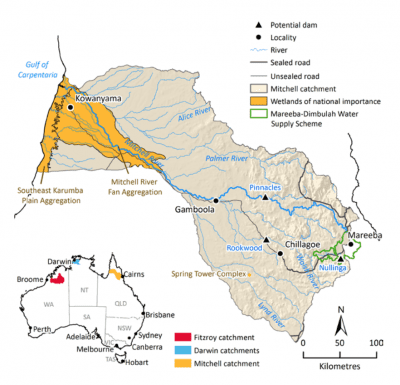 The Mitchell catchment has the potential to support 140,000 ha of year-round irrigated agricultural development, such as sugarcane, the report suggested. Irrigation on this scale would be based on four large instream dams that could release 2800 GL for agriculture in 85pc of years.
The Mitchell catchment has the potential to support 140,000 ha of year-round irrigated agricultural development, such as sugarcane, the report suggested. Irrigation on this scale would be based on four large instream dams that could release 2800 GL for agriculture in 85pc of years.
Offstream water harvesting could extract 2000 GL with 85pc reliability, which would be sufficient to irrigate 200,000 ha of a single dry-season crop such as cotton.
Groundwater opportunities were small and localised.
“The precise area under irrigation will, in any year, vary depending on factors such as irrigation efficiency, water availability, crop choice and risk appetite. Irrigation of this type could be widely distributed across the catchment or concentrated into a smaller number of irrigation areas.”
“Farming systems that have more than one crop a year, or are integrated and supplement the dominant beef production systems in the Mitchell catchment are most likely to succeed initially.
“ Irrigated forages for young cattle – to increase their weight and to allow early weaning – could markedly increase beef production per year and yield a profit.”
For more detail on the report click here to visit the CSIRO’s NAWRA website

No way this project will go ahead, even if all the politicians are in favour and the funding is forthcoming, all it will take is a small minority of people to put their hand up and say, I’m not having this built on my land.
When I was at school fifty years ago, we were told if australia built 14 dams across the northern part of Australia and turned the water inland we would double the agricultural area of Australia. Also if they were hydro electric dams we could solve Australia’s electricity problems and also export the excess to asia. if the government made a commitment like an 100year plan we could offset our carbon footprint by reforestation of pockets of land in central Australia. It would a wonderful achievement.
Awesome news, this is just what Australia needs, not only will it provide water, but create a lot of jobs, this should have been done in 1985 in my books, it is a pity such an uneducated class of people can get into parliament and then into power, and strangle the country via the Green Party.
Brilliant Plan. Let’s make it happen!
These plans have my full support. It will be good for 100% of Australians even though some don’t realize and some will oppose it. Just do it. ASAP.